(Page créée avec « Water ceramic filter: case study of the filter FILTRON made by MERINCA Company in Lima, Peru. ») |
(Mise à jour pour être en accord avec la nouvelle version de la source de la page) |
||
| (42 révisions intermédiaires par 3 utilisateurs non affichées) | |||
| Ligne 1 : | Ligne 1 : | ||
| − | {{ | + | {{Tuto Details |
|Main_Picture=Filtre_à_eau_en_céramique_image001.jpg | |Main_Picture=Filtre_à_eau_en_céramique_image001.jpg | ||
|Licences=Attribution (CC BY) | |Licences=Attribution (CC BY) | ||
| − | |Description=Water ceramic filter: case study of the filter FILTRON made by | + | |Description=Water ceramic filter: case study of the filter FILTRON made by MERINSA Company in Lima, Peru. |
| − | |Area=Food, Water | + | |Area=Food, Water |
|Type=Tutorial | |Type=Tutorial | ||
|Difficulty=Hard | |Difficulty=Hard | ||
| Ligne 15 : | Ligne 15 : | ||
|IsTranslation=1 | |IsTranslation=1 | ||
}} | }} | ||
| − | {{ | + | {{Introduction |
| − | |Introduction= | + | |Introduction=The ceramic filter FILTRON was made by the company Merinsa, in partnership with the American association Potters For Peace, for families living in the slums around Lima and who do not have access to drinkable water. A study was undertaken to see the influence of the filters on the reduction of stomach diseases: a filter was given to 60 families in a slum of Lima and they were studied compared to 60 other families without filter. The FILTRON proved to be very efficient in the reduction of stomach diseases. At the end of the experiment, a filter was given to all the 120 families. |
| − | + | The FILTRON filters 2L of water per hour and eliminates particles and bacteria. Depending on the size of the plastic container, it is possible to store 10L of clean water. The filter is thus suitable for a family. | |
| − | + | Advantages: | |
| − | * | + | * The use of the filter does not require any energy |
| − | * | + | * Use of local materials (clay, wood fines) |
| − | * | + | * Easy maintenance: must be cleaned once a week. Do not put it under the sun otherwise seaweeds can grow |
| − | * | + | * Cheap (sold for 30$ by Merinsa Company) |
| − | * | + | * Long lifetime: a few years |
| − | * | + | * Could be sealed (thanks to the plastic container’s lid) which prevents the water from being re-contaminated |
| − | |||
| − | |||
| − | |||
| − | |||
| − | |||
| − | + | Disadvantages: | |
| + | * Use of silver (which is not always a material available locally) | ||
| + | * Use of an oven which should be able to reach 1000°C see if a potter around you has a ceramic oven and could lend it to you | ||
| + | * Heavy and bulky | ||
| + | * In our case, the price of the filter is low but still too high for the people in the slums who need it. Merinsa Company’s main clients for those filters are charities who then give them out to the families. | ||
| − | + | Context: | |
| − | + | Water is a real issue everywhere in Peru, from the mountains to the coast. In the cities, chlorine is used to purify water, thus, water which could be found in the pipes is in theory clean. However, this water is also stored in tanks who are usually not sealed and where the water gets re-contaminated. People buy water in bottles or buy filters. Merinsa Company builds all kind of filters to answer this need but there is still a lot to do in Peru in the field of water in order to provide clean water to everybody. | |
| + | |||
| + | In Lima, the slums are located on the mountains around. Water is stored in huge tanks and is accessible (but contaminated) for families living downstream. As the slum expands, new habitations are built upstream from the tanks and people do not have access to water at all. | ||
| + | |||
| + | According to Ricardo, at the head of Merinsac , the economical problems are not the only reason why the people from the slums do not buy a Filtron; there is also an educational issue. The families seem not to know that their stomach diseases are coming from the water they drink and thus do not understand why it could be necessary to own such filters. Some families to which a Filtron was given have "taken the ceramic pot off" in order to only retrieve the pmlastic container, whose use appear more obvious to them. The charities should really work on the education and the integration of the filters in the every day life of the families if they want their donation to be useful. | ||
}} | }} | ||
| − | {{ | + | {{TutoVideo |
| − | | | + | |VideoType=Youtube |
| − | | | + | |VideoURLYoutube=https://youtu.be/ZdnHj77wD58 |
}} | }} | ||
| − | {{ | + | {{Materials |
| − | |Material=* | + | |Material=*Clay, |
| − | * | + | * Wood fines, |
| − | * | + | *Silver, |
| − | * | + | *Plastic container with a tap, |
| − | |Tools=* | + | |Tools=*Oven which could go up to 1000°C |
}} | }} | ||
| − | {{ | + | {{Tuto Step |
| − | + | |Step_Title=Ceramic pot | |
| + | |Step_Content=<div class="mw-translate-fuzzy"> | ||
| + | The ceramic filters can filter the water using a system of pores: while making the pot wood fines are incorporated in the clay. When the pot is brought to 1000°C in the oven, the woodfines will burn, leaving tiny pores in the pot. | ||
| + | </div> | ||
|Step_Picture_00=Filtre_à_eau_en_céramique_CeramiquePot.jpg | |Step_Picture_00=Filtre_à_eau_en_céramique_CeramiquePot.jpg | ||
|Step_Picture_01=Filtre_à_eau_en_céramique_Schema.png | |Step_Picture_01=Filtre_à_eau_en_céramique_Schema.png | ||
| − | |||
| − | |||
}} | }} | ||
| − | {{ | + | {{Tuto Step |
| + | |Step_Title=Silver brushing | ||
| + | |Step_Content=The silver brushing will eliminate the bacteria. | ||
|Step_Picture_00=Filtre_à_eau_en_céramique_SchemaBActBien.png | |Step_Picture_00=Filtre_à_eau_en_céramique_SchemaBActBien.png | ||
| − | |||
| − | |||
}} | }} | ||
| − | {{ | + | {{Tuto Step |
| + | |Step_Title=Plastic container | ||
| + | |Step_Content=The ceramic pot is put in a plastic container. The size of the plastic container could be chosen according to the amount of clean water you will need to store. | ||
| + | |||
| + | The Filtron filters use a 20L plastic container which can store 10L of clean water. | ||
|Step_Picture_00=Filtre_à_eau_en_céramique_MuchasGracias.png | |Step_Picture_00=Filtre_à_eau_en_céramique_MuchasGracias.png | ||
| − | |||
| − | |||
| − | |||
| − | |||
}} | }} | ||
| − | {{ | + | {{Notes |
| − | |Notes= | + | |Notes=Find the origin of Merinsa's Filtron in Lima, Peru here: http://www.merinsa.com/resp_social.html |
| − | + | The American association Potters For Peace aims to help the potters all around the world to develop ceramic filters: http://pottersforpeace.org/?page_id=63. You can find their tutorial to build an oven or a press here: http://pottersforpeace.org/?page_id=487 | |
| − | + | More information about ceramic filters on the Canadian charity CAST's website: https://www.hwts.info/products-technologies/d25e3821/ceramic-pot-filter/technical-information | |
| − | + | <div class="mw-translate-fuzzy"> | |
| + | We are two French students exploring low technologies in South America. Do not hesitate to follow our adventure here : https://www.facebook.com/LAtelierLowTech/ | ||
| + | </div> | ||
| + | }} | ||
| + | {{PageLang | ||
}} | }} | ||
| − | {{ | + | {{Tuto Status |
|Complete=Published | |Complete=Published | ||
}} | }} | ||
| + | {{Separator}} | ||
Version actuelle datée du 8 décembre 2020 à 08:54
Description
Water ceramic filter: case study of the filter FILTRON made by MERINSA Company in Lima, Peru.
Introduction
The ceramic filter FILTRON was made by the company Merinsa, in partnership with the American association Potters For Peace, for families living in the slums around Lima and who do not have access to drinkable water. A study was undertaken to see the influence of the filters on the reduction of stomach diseases: a filter was given to 60 families in a slum of Lima and they were studied compared to 60 other families without filter. The FILTRON proved to be very efficient in the reduction of stomach diseases. At the end of the experiment, a filter was given to all the 120 families.
The FILTRON filters 2L of water per hour and eliminates particles and bacteria. Depending on the size of the plastic container, it is possible to store 10L of clean water. The filter is thus suitable for a family.
Advantages:
- The use of the filter does not require any energy
- Use of local materials (clay, wood fines)
- Easy maintenance: must be cleaned once a week. Do not put it under the sun otherwise seaweeds can grow
- Cheap (sold for 30$ by Merinsa Company)
- Long lifetime: a few years
- Could be sealed (thanks to the plastic container’s lid) which prevents the water from being re-contaminated
Disadvantages:
- Use of silver (which is not always a material available locally)
- Use of an oven which should be able to reach 1000°C see if a potter around you has a ceramic oven and could lend it to you
- Heavy and bulky
- In our case, the price of the filter is low but still too high for the people in the slums who need it. Merinsa Company’s main clients for those filters are charities who then give them out to the families.
Context:
Water is a real issue everywhere in Peru, from the mountains to the coast. In the cities, chlorine is used to purify water, thus, water which could be found in the pipes is in theory clean. However, this water is also stored in tanks who are usually not sealed and where the water gets re-contaminated. People buy water in bottles or buy filters. Merinsa Company builds all kind of filters to answer this need but there is still a lot to do in Peru in the field of water in order to provide clean water to everybody.
In Lima, the slums are located on the mountains around. Water is stored in huge tanks and is accessible (but contaminated) for families living downstream. As the slum expands, new habitations are built upstream from the tanks and people do not have access to water at all.
According to Ricardo, at the head of Merinsac , the economical problems are not the only reason why the people from the slums do not buy a Filtron; there is also an educational issue. The families seem not to know that their stomach diseases are coming from the water they drink and thus do not understand why it could be necessary to own such filters. Some families to which a Filtron was given have "taken the ceramic pot off" in order to only retrieve the pmlastic container, whose use appear more obvious to them. The charities should really work on the education and the integration of the filters in the every day life of the families if they want their donation to be useful.Youtube
Matériaux
- Clay,
- Wood fines,
- Silver,
- Plastic container with a tap,
Outils
- Oven which could go up to 1000°C
Étape 1 - Ceramic pot
The ceramic filters can filter the water using a system of pores: while making the pot wood fines are incorporated in the clay. When the pot is brought to 1000°C in the oven, the woodfines will burn, leaving tiny pores in the pot.
Étape 3 - Plastic container
The ceramic pot is put in a plastic container. The size of the plastic container could be chosen according to the amount of clean water you will need to store.
The Filtron filters use a 20L plastic container which can store 10L of clean water.
Notes et références
Find the origin of Merinsa's Filtron in Lima, Peru here: http://www.merinsa.com/resp_social.html
The American association Potters For Peace aims to help the potters all around the world to develop ceramic filters: http://pottersforpeace.org/?page_id=63. You can find their tutorial to build an oven or a press here: http://pottersforpeace.org/?page_id=487
More information about ceramic filters on the Canadian charity CAST's website: https://www.hwts.info/products-technologies/d25e3821/ceramic-pot-filter/technical-information
We are two French students exploring low technologies in South America. Do not hesitate to follow our adventure here : https://www.facebook.com/LAtelierLowTech/
Published
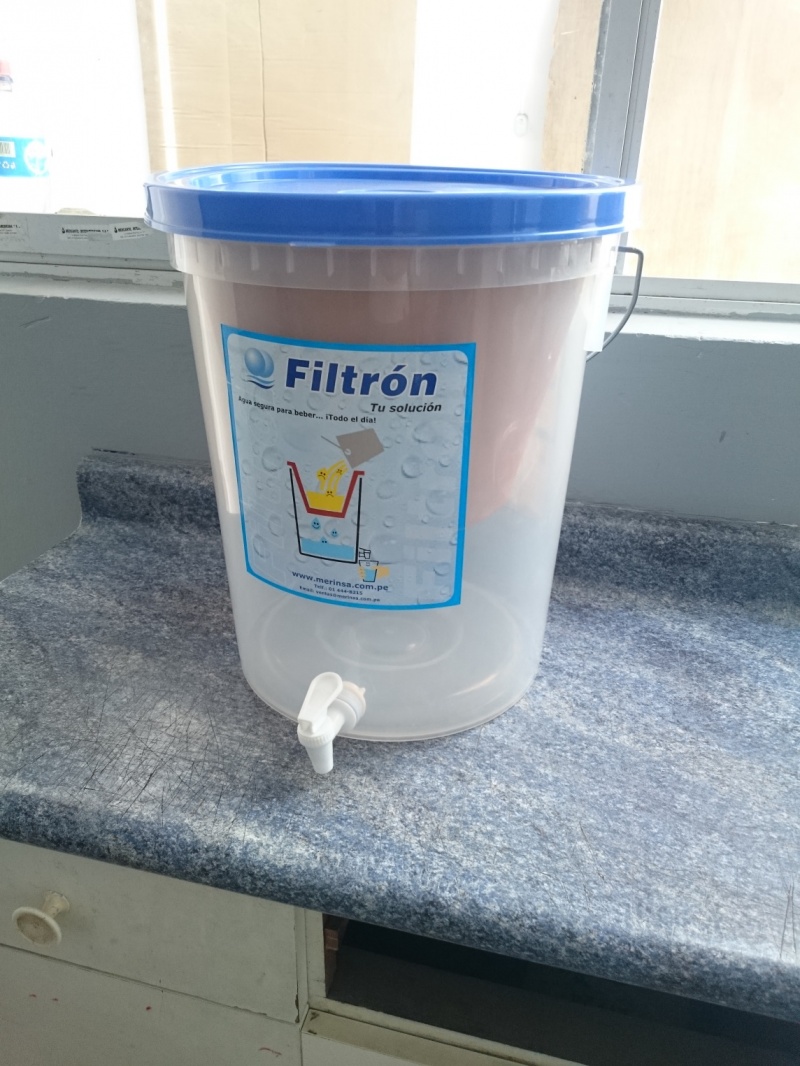
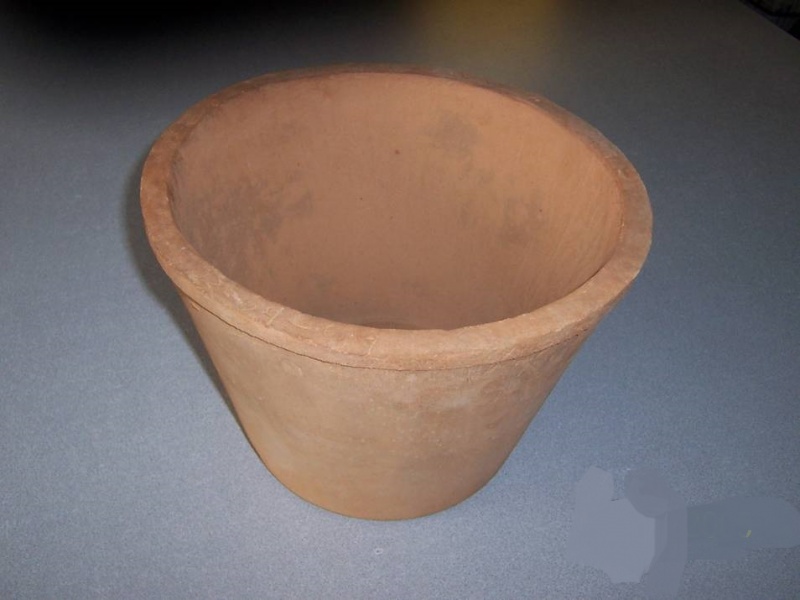
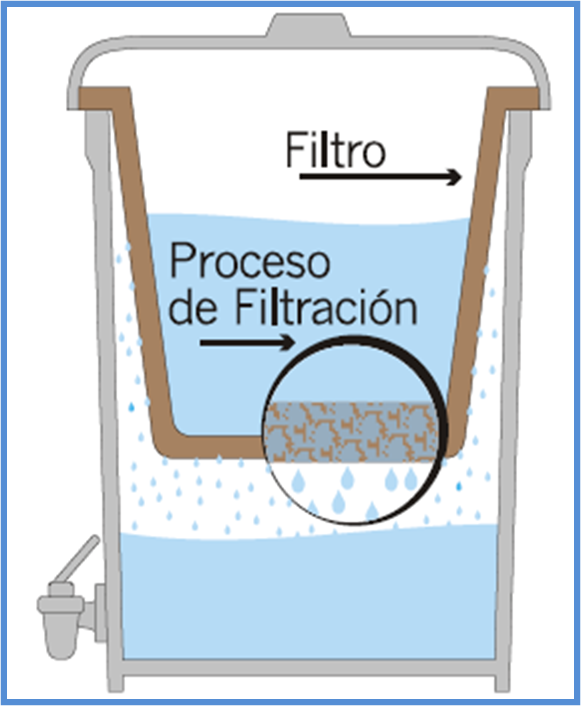
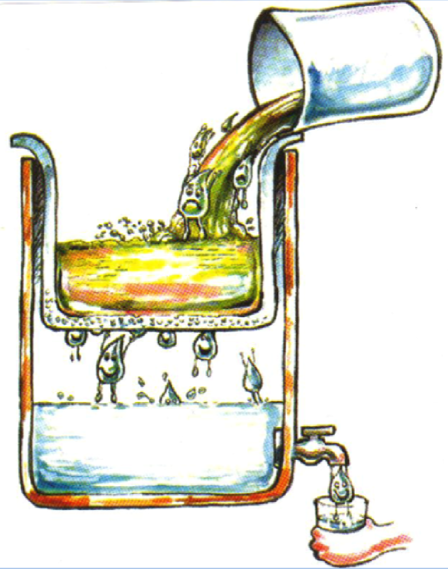
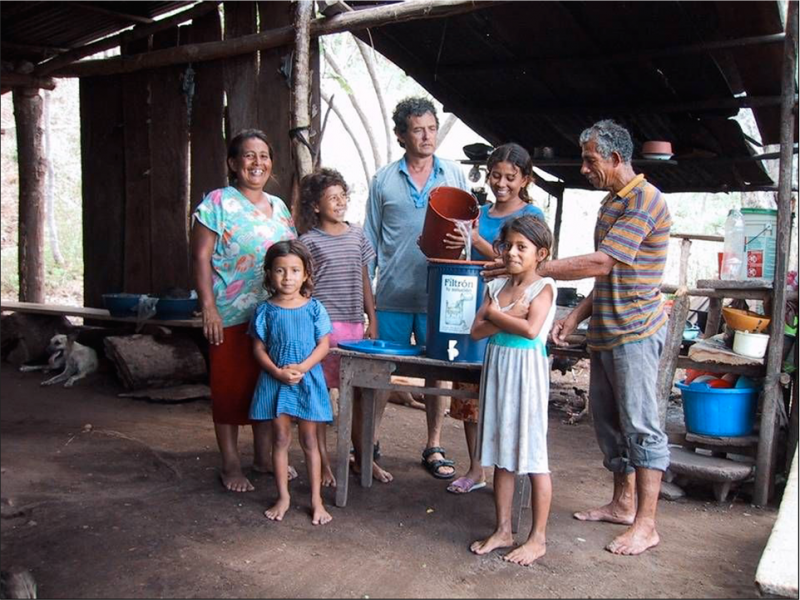
 Français
Français English
English Deutsch
Deutsch Español
Español Italiano
Italiano Português
Português